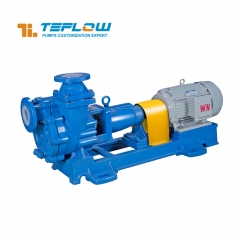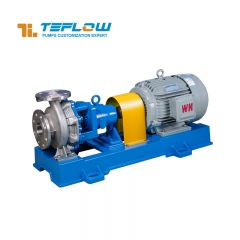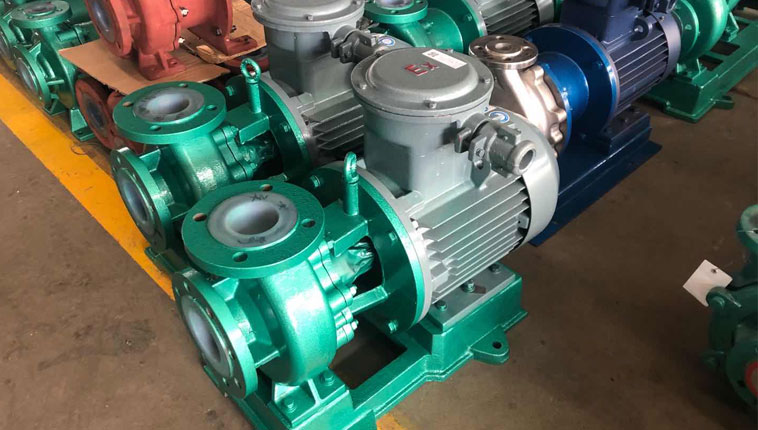In the chemical production process, mechanical seals are one of the core components of pump equipment, and their performance directly affects the reliability and safety of equipment operation. According to the different structures and working principles, mechanical seals are mainly divided into three types: single-end mechanical seals, double-end mechanical seals and container mechanical seals. This article will provide a scientific analysis from three aspects: structural characteristics, advantages and disadvantages, and applicable scenarios.
Single mechanical seal
Structural features:
Single-end mechanical seals consist of a pair of dynamic and static rings (sealing faces), springs, auxiliary seals, etc., and only one sealing face is used to isolate the medium. It is usually used in conjunction with an external flushing system (such as API Plan 11).
advantage:
1.Simple structure:Fewer components mean lower installation and maintenance costs.
2.Small size:It takes up little space and is suitable for pumps with limited space.
3.High economic efficiency:The material cost and spare parts price are relatively low.
shortcoming:
1.Higher risk of leakage:With only a single-layer seal, once the end face is worn or fails, the medium may leak directly.
2.Limited applicability:It is difficult to handle high temperature, high pressure, highly corrosive or particle-containing media.
3.Reliance on flushing system:External flushing fluid is required for continuous cooling and lubrication, and maintenance costs increase when the system is complex.
Applicable scenarios:
Conventional clean liquids (such as water, low-corrosive media), medium and low pressure conditions, and occasions where the risk of leakage is not stringent.
Double mechanical seal
Structural features:
Double mechanical seals consist of two pairs of sealing faces, forming a "back-to-back" or "face-to-face" structure, with a barrier fluid (buffer) in between, such as the API Plan 53 or Plan 54 system. The barrier fluid pressure is usually slightly higher than the medium pressure, which can block leakage in both directions.
advantage:
1.High sealing reliability:The double sealing layer design can temporarily stop leakage even if one side fails.
2.Adapt to complex working conditions:Can handle toxic, flammable, volatile or particulate media.
3.Extend service life:The barrier fluid lubricates and cools the seal faces, reducing wear.
shortcoming:
1.Complex structure:An isolation fluid circulation system is required, which results in high initial investment and maintenance costs.
2.Increased energy consumption:Additional power is required to maintain the circulation of the isolation fluid.
3.Difficult to operate:Strict requirements are placed on installation accuracy and isolation fluid management.
Applicable scenarios:
Dangerous media (such as chlorine, benzene), high temperature and high pressure environment, or chemical processes with strict environmental protection requirements.
Cartridge mechanical seal
Structural features:
The cartridge mechanical seal pre-installs the moving ring, stationary ring, spring and other components in a sealing cavity and is installed on the pump shaft as a whole. Its design is standardized and there is no need to adjust the compression on site.
advantage:
1. Easy installation:Overall assembly reduces human errors and shortens downtime.
2.High reliability:It has been debugged before leaving the factory and the sealing performance is stable.
3.Low maintenance cost:When damaged, it can be replaced as a whole, reducing the difficulty of maintenance.
shortcoming:
1.High initial cost:Pre-installed design leads to higher unit price.
2.Complicated spare parts management:Different types of seal assemblies need to be stocked.
3.Lack of flexibility:Special working conditions require customized design, which takes a long time.
Applicable scenarios:
High-value pumps, equipment that is frequently started and stopped, or production lines that require high maintenance efficiency (such as petrochemical and pharmaceutical industries).
Selection Recommendations
1.Medium characteristics:Double seals are preferred for media containing particles or highly corrosive media.
2.Working pressure:High pressure environments require double-face or cartridge seals.
3.Maintenance capability:If there is a lack of professional technicians, cartridge seals are more advantageous.
4.Cost Control:When budgets are limited and service conditions are mild, single seals are an economical choice.
Summarize
1.Single mechanical seal:Simple and economical, suitable for ordinary working conditions.
2.Double mechanical seal:Security redundancy, specializing in high-risk scenarios.
3.Cartridge mechanical seal:Efficient and stable, serving high-demand production lines.
As the chemical industry's requirements for safety and environmental protection become increasingly stringent, the application ratio of double-end seals and cartridge seals is gradually increasing. When selecting a seal, it is necessary to comprehensively weigh the medium characteristics, working conditions and life cycle costs to achieve the best balance between safety and economy.





 +86 18130251359
+86 18130251359 teflowpumps@tlpumps.com
teflowpumps@tlpumps.com











 +86+0563-5093318
+86+0563-5093318
